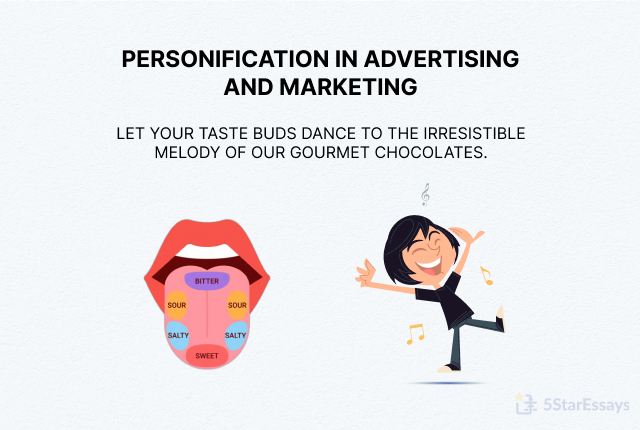
Personification, a literary device that attributes human characteristics to non-human entities or abstract concepts, is a powerful tool in the arsenal of writers. This enchanting technique not only enhances the richness of language but also plays a significant role in captivating readers. Let’s delve into the world of personification and explore how it affects the reader’s experience.
Introduction of Personification
Definition of Personification: Personification involves imbuing inanimate objects, animals, or even abstractions with human traits, emotions, or actions. It’s like giving a voice to the voiceless, breathing life into the lifeless.
Importance of Personification in Writing: Writers use personification to breathe life into their prose, making it more relatable and emotionally resonant. By attributing human characteristics to non-human elements, writers engage readers on a deeper level.

Engaging the Reader
Creating Emotional Connections
Personification forms emotional bonds between readers and the text. When readers see objects or concepts with human qualities, they empathize and connect more deeply with the narrative. For example, “The wind whispered secrets” evokes a sense of mystery and intrigue.
Stimulating Imagination
It sparks readers’ imaginations by conjuring vivid mental images. Phrases like “The trees danced in the breeze” paint a more compelling picture than a dry description.
Setting the Mood
Personification sets the tone and mood of a piece. Describing a storm as “angry” creates a more intense atmosphere than a simple meteorological report.
Enhancing Descriptive Writing of Personification
Giving Life to Inanimate Objects
Personification breathes life into objects, making them more than just props. For instance, “The old oak tree sighed with wisdom” transforms a tree into a sage character.
Vivid Imagery through Personification
Personification creates imagery that lingers in readers’ minds. It transforms mundane scenes into extraordinary ones, making the writing more memorable.
Making Abstract Concepts Tangible
Personifying abstract concepts like time or fate makes them easier to grasp. “Time marches on” makes the passage of time more relatable.
Conveying Complex Ideas
Simplifying Abstract Concepts
Personification simplifies complex ideas by representing them through relatable characters or actions. This aids in reader comprehension.
Making Ideas Memorable
Readers are more likely to remember personified concepts. “Justice is blind” leaves a lasting impression, helping the idea stick.
Aiding in Comprehension
Personification aids in conveying complex themes or moral lessons. It provides a relatable framework for exploring intricate subjects.
Creating Empathy and Relatability
Humanizing Characters and Concepts
In stories, personification humanizes characters, making them more endearing and relatable. Think of beloved characters like Winnie the Pooh or Mickey Mouse.
Invoking Empathy in Readers
When characters or objects exhibit human qualities, readers empathize with their struggles and triumphs. This emotional connection keeps readers engaged.
Encouraging Identification
Readers often identify with personified elements, seeing their own experiences reflected in the narrative. This fosters a sense of connection and understanding.
Examples of Personification
Personification is ubiquitous, found in literature, advertising, and everyday speech. In literature, authors like Shakespeare and Dickens masterfully employed it to breathe life into their characters and settings. In advertising, personification is used to create memorable brand mascots like the Geico Gecko. Even in everyday speech, we say things like “Time flies” or “The city never sleeps.”
The Role of Personification in SEO
Beyond its literary merits, personification also has a role in the digital realm. When used effectively, it can enhance SEO (Search Engine Optimization) efforts by improving readability, increasing user engagement, and potentially boosting search engine rankings.
Tips for Effective Use of Personification
Avoiding Overuse
While personification can be a potent tool, overusing it can dilute its impact. Use it selectively to highlight key moments or themes in your writing.
Maintaining Consistency
Ensure that personified elements maintain their human traits throughout the narrative. Inconsistencies can confuse readers.
Staying Relevant to the Theme
Personification should enhance the message or theme of your writing. Ensure it aligns with your overall purpose.
The Psychological Impact
Cognitive Engagement
Personification engages readers cognitively, making them actively participate in the text. This engagement fosters a deeper understanding of the content.
Emotional Resonance
By evoking emotions and empathy, personification makes the content more emotionally resonant. Readers remember what they feel.
Long-term Memory
Memorable personification creates long-lasting memories. When readers encounter personified elements in your writing, they’re more likely to remember your message.
Case Studies
To illustrate the power of personification, let’s explore a few case studies. We’ll examine successful brand campaigns and memorable literary works that effectively employed this technique to engage audiences and convey their messages.
Conclusion
In conclusion, personification is a literary gem that not only enriches writing but also captivates readers by creating emotional connections, enhancing descriptions, conveying complex ideas, and humanizing characters and concepts. As a writer, embracing personification can breathe life into your words, leaving a lasting impact on your audience.
FAQs on Personification
How do I avoid overusing personification in my writing?
Balance is key. Use personification sparingly, focusing on moments where it enhances the narrative or message.
Can personification be used in technical or scientific writing?
While personification is more commonly associated with creative writing, it can occasionally be used in technical or scientific contexts to make complex ideas more accessible. However, it should be applied judiciously to maintain professionalism.
Are there cultural differences in how personification is perceived?
Yes, cultural perspectives can influence how personification is interpreted. Some cultures may be more receptive to anthropomorphism, while others may have different associations with personified elements.
What’s the difference between personification and anthropomorphism?
Personification attributes human qualities to non-human entities or abstract concepts, while anthropomorphism involves giving non-human entities or animals distinctly human characteristics, such as emotions, thoughts, or actions.
How does personification impact children’s literature?
Personification plays a crucial role in children’s literature by creating relatable and engaging characters and settings. It helps young readers connect with the story and its moral lessons on a deeper level.
Incorporating personification into your writing can be a creative and effective way to engage readers, evoke emotions, and enhance the impact of your message. Whether you’re crafting a compelling narrative, optimizing web content for SEO, or simply seeking to connect with your audience on a more profound level, personification is a versatile tool that can breathe life into your words and leave a lasting impression. So, embrace the art of personification and watch your writing come alive in the eyes of your readers.

